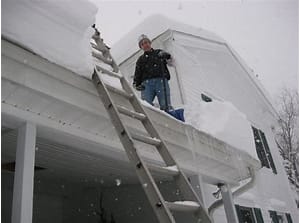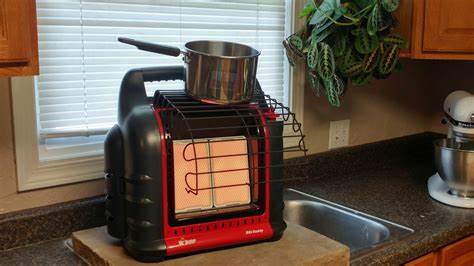An Electro-Magnetic Pulse (EMP) attack or a severe solar flare—more technically known as a Coronal Mass Ejection (CME)—has the potential to wipe out most modern electronics. The result? Society could be thrown abruptly back into a pre-industrial state. It might not seem immediately apocalyptic, but the long-term fallout on infrastructure, communication, and supply chains would be profound. Surviving such an event, especially with minimal gear, hinges on returning to the basics: human essentials and non-electronic solutions.
Here’s a practical, no-frills guide to preparing for and adapting to life after an EMP.
- Grasp the Immediate Impact and What Might Still Work Before you can respond, you need to understand what an EMP actually does.
- What it affects:
- Electronics: Pretty much anything with microchips, complex circuits, or long wires is vulnerable. This includes your phone, laptop, car (if it’s newer), most appliances—even some battery-powered devices.
- Power Grid: This is the big one. The national grid is highly exposed and could fail almost completely.
- What might survive:
- Analog or older mechanical systems: Think pre-1980s vehicles with carbureted engines, wind-up clocks, or anything purely mechanical.
- Simple unpowered electronics: Some might make it if they’re off, unplugged, and isolated—though results can be unpredictable.
- Faraday cages: If you’ve stored devices in one, they stand a good chance. But let’s assume for now that you haven’t.
- People: EMPs don’t harm humans or animals directly. The danger comes from the domino effect on society.
- Water: Your First and Fastest Need Without power, most water systems stop working. That makes clean water your most urgent concern.
- Immediate steps:
- Fill your bathtub, sinks, containers: The moment you suspect an EMP, fill everything.
- Stock bottled water: It doesn’t expire quickly and it’s your safest source.
- Sourcing long-term:
- Rain collection: A tarp and some buckets can go a long way.
- Natural water sources: Know where your nearest stream, lake, or river is. But never drink untreated water.
- Purification with minimal tools:
- Boiling: The gold standard. Rolling boil for one minute (three minutes if you’re up in the mountains).
- Cloth filtration: Just removes visible particles. Won’t kill germs.
- Portable filters: If you have a LifeStraw or Sawyer filter tucked away somewhere safe, great. Otherwise, solar disinfection (SODIS) using clear PET bottles in sunlight is your next best bet.
- Food: Secure What You Can, Then Grow More Our food system depends on electricity at every level. Grocery store shelves won’t stay full for long.
- Short-term stores:
- Stockpile non-perishables: Canned foods, dried fruits, nuts, granola bars. Ideally, aim for a month’s worth.
- Manual can opener: An obvious essential that’s easy to overlook.
- Sustainable food options:
- Foraging: Only if you know what you’re doing. Some wild plants are deadly.
- Basic hunting or trapping: This is not the time to learn. Only go this route if you already have skills and simple tools like slingshots or snares.
- Gardening: Even a few seed packets can help. Fast-growing, calorie-dense veggies are your best bet.
- Preservation: Learn to dry, salt, or smoke food. It makes a big difference.
- Communication Without Electronics If everything digital goes silent, you’ll need fallback methods.
- Battery-powered AM/FM radio: Store it in a makeshift Faraday cage, even if it’s just a metal trash can.
- Ham radio: Useful if you’re licensed and can protect it beforehand.
- Low-tech signaling: Whistles, mirrors, even handwritten notes.
- Pre-arranged plans: Decide now where to meet family or friends if you can’t talk.
- Shelter and Staying Warm Cold can be as deadly as thirst. Your home is your first defense.
- Insulation and layers: Wool, cotton, and lots of layers. Don’t count on electric blankets.
- Heating: Fireplaces, wood stoves, or outdoor fires are your only real option. Have firewood and fire-starting tools ready.
- Sleeping gear: Blankets, sleeping bags—whatever keeps body heat in.
- Cooking: Propane stoves or fire pits work, assuming you have fuel.
- Security and Defense Law enforcement may be stretched thin. You’ll need to think about basic safety.
- Reinforce your home: Lock doors, secure windows.
- Neighbor support: Work with people you trust. A small, cooperative group can be a huge advantage.
- Basic defense: A sturdy stick or knife is better than nothing. Avoid confrontation if you can.
- Health and Sanitation Injuries and illness will become much more dangerous without modern medicine.
- First-aid: Stock bandages, antiseptics, medications you rely on.
- Cleanliness: Soap, hand sanitizer, and TP are more important than they sound.
- Waste management: Plan where and how you’ll handle waste if plumbing fails. A shovel might become your most-used tool.
- Learn basic care: Knowing how to clean wounds, reduce fevers, and handle minor infections could save lives.
- Build Useful Skills Now When technology fails, know-how becomes your best resource.
- Navigation: Maps and compasses matter again.
- Fire-starting: Learn more than just using a lighter.
- Knots and repairs: Helps with shelter, gear, and more.
- Gardening and foraging: Essential for long-term survival.
- Mental resilience: Perhaps the most important. This won’t be easy.
Final Thoughts
Surviving an EMP with minimal gear isn’t about going full survivalist. It’s about being thoughtful and prepared in advance. Focus on the basics: water, food, warmth, security, and communication. You don’t need to go off-grid tomorrow, but starting to learn and gather a few essentials now could make all the difference later. Preparedness, ultimately, is less about fear and more about confidence in the face of uncertainty.






